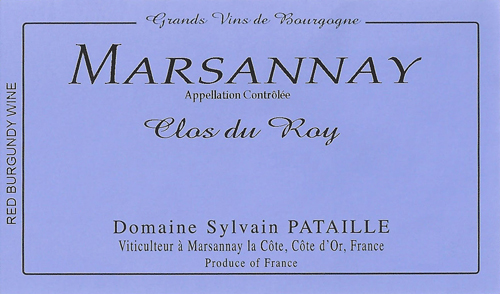Marsannay Clos Du Roy
At a Glance
- Size: 2.25 ha (5.56 ac)
- Variety: Pinot Noir
- Vine Age: Planted in 1952, 1965, 1978, 2001, 2003-6
- Terroir: Moderate slope facing east to southeast. Gravelly (grèzes litée), slightly reddish, iron-rich soil (“Rabbit Earth"). 270-meters elevation.
- Viticulture: Certified organic, biodynamic methods
- Vinification: 100% whole-cluster pressing, indigenous yeast fermentation. Aged for 18 months in barrel, 5-6 months blending and settling in stainless steel tank, minimal sulfur additions only at bottling.
Additional Info
Etymology: Roy is the ancient French spelling of Roi, meaning king.
This Clos in Chenôve was originally called “Le Clos des Ducs”, as it was a possession of the Dukes of Burgundy. The vineyard was renamed Clos du Roy in 1477, after the defeat at Nancy of the Duke of Burgundy, Charles the Bold, and the subsequent annexation to the Kingdom of France of his lands.
Source: Syndicat d’Appellation Marsannay.
Site: Clos du Roy is located in Chenôve. It is the northernmost lieu-dit in the Marsannay appellation. The vineyard sits at 270-meters elevation. The slope is moderate. It faces slightly south of east.
Geology: The upper portion of Clos du Roy sits on a large deposit of the light, gravelly, and calcium-rich grèzes litée. This deposit sits on top of a bedrock of White Oolite limestone at the top of the slope, and red sandy marl towards the bottom. The lowest portion of the slope consists of ancient alluvium from the old Ouche riverbed.
Soil: The depth of soil is variable throughout the vineyard. The soil of Clos du Roy is poor, but very rich in iron and gravelly.
With many thanks to geologist Brenna Quigley for putting the physical and geologic aspects of these vineyards into words far more meaningful than we could have written on our own. https://www.brennaquigley.com
We are also greatly indebted to geologist Françoise Vannier of Adama Terroirs Viticoles who created the soil and bedrock maps for Fixin that Brenna based part her work on. www.adama-terroirs.fr

